SEA OF SHAME
Dolphins and porpoises increasingly slaughtered for food and fish bait
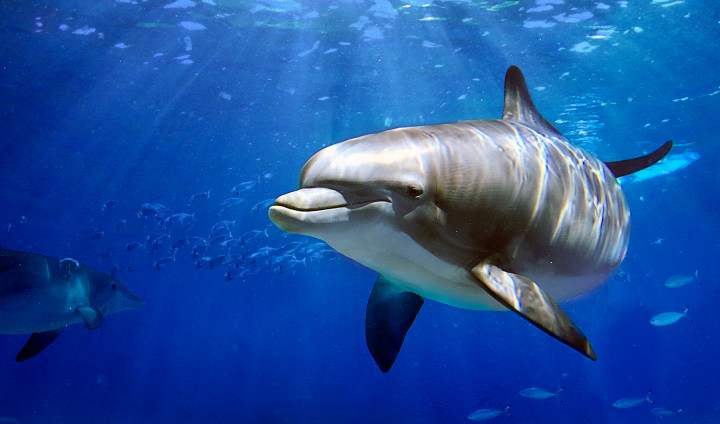
As food fish decline, thousands of small cetaceans like dolphins and even orcas are being targeted.
The picture of the dolphin cut in half by a man with his hand on its bloody head and a group standing around with basins waiting for meat did it for me. I teared up and couldn’t read the caption.
Dolphins are so beautiful, so trusting, so playful and have no history of deliberately harming humans. Unlike some wild creatures, they seem oblivious to the threat we pose to them.
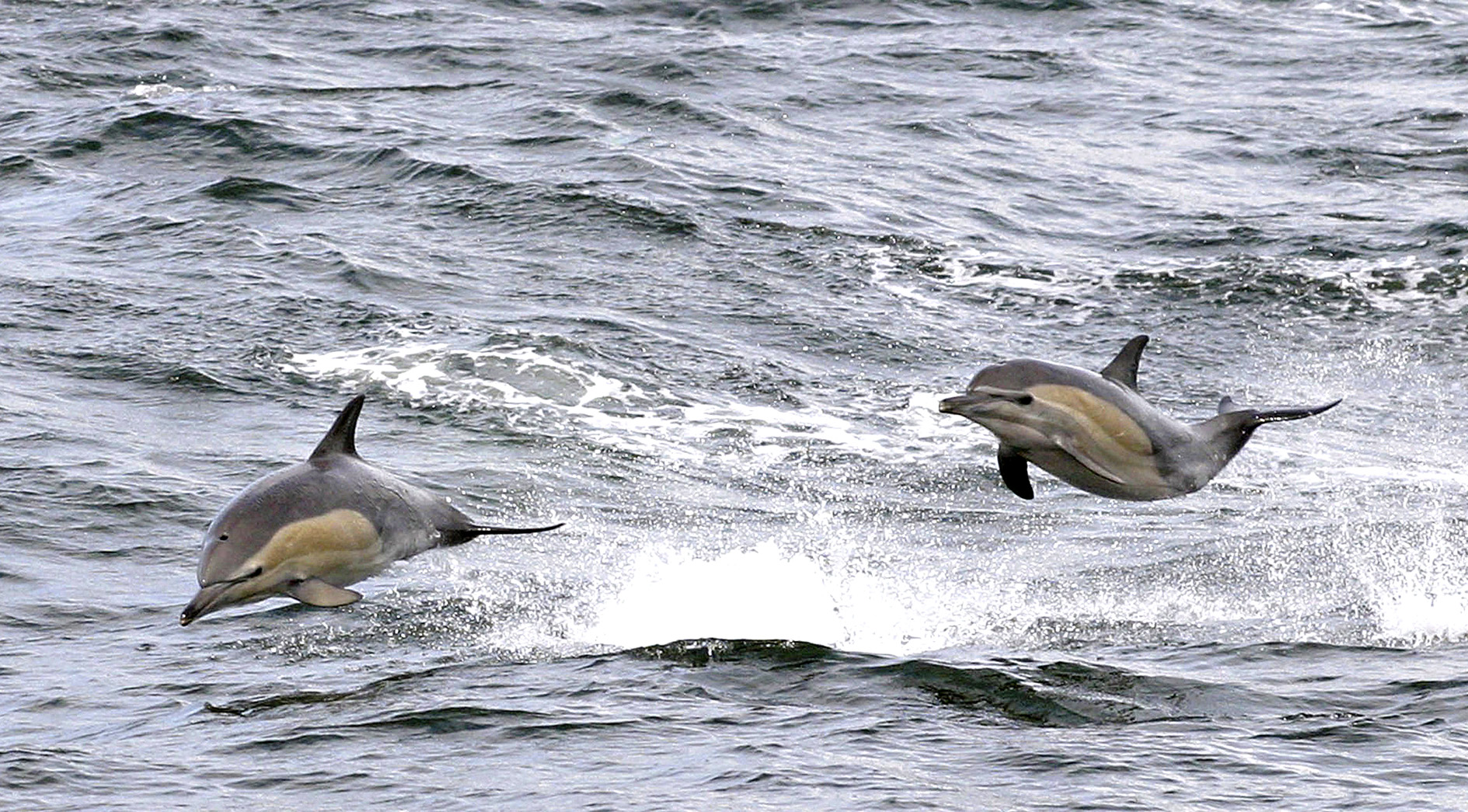
Two bottlenose dolphins cavort in the sea, jumping high out of the water, off the coast of False Bay, Western Cape. (Photo: Gallo Images / Deaan Vivier)
In return we are increasingly catching them to eat, or use as bait, or because fishers see them as competitors or as cures for coronavirus. The brutality of the picture was shocking.
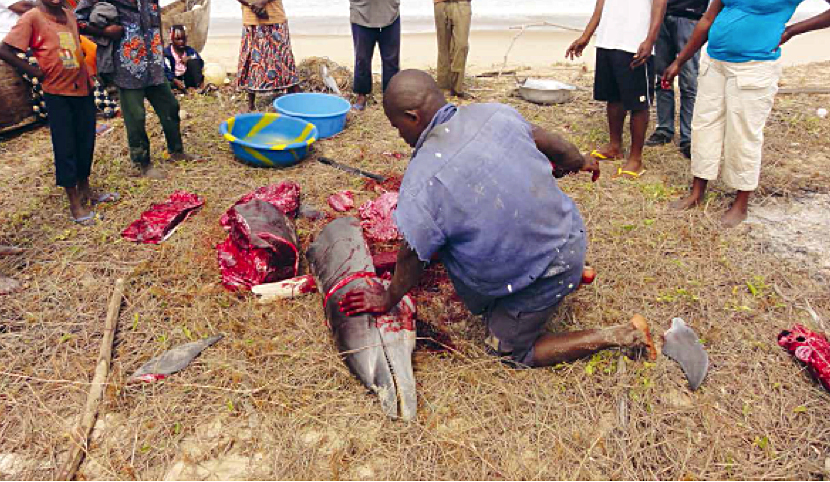
Butchering a dolphin, West Africa. (Photo: Supplied)
The photo was in a report by two global NGOs, Pro Wildlife and Whale and Dolphin Conservation (WDC), which shines a spotlight on the horrific numbers of small cetaceans being slaughtered around the world, driving some populations towards extinction.
According to the report, “Small Cetaceans – Even Bigger Problems”, more than 100,000 dolphins, porpoises and small whales are being killed each year.
Increasing numbers are being chopped up to be used as bait in commercial fisheries or killed and used as a spurious coronavirus “cure”.
Read more in Daily Maverick: Endangered humpback dolphins appear to be increasingly vulnerable off South Africa
Hunting is on the rise in many countries, leading to both organisations calling on coastal states and the International Whaling Commission to take action to prevent more and more populations and species from going extinct.
The report warns that being near the top of the food chain, there was a risk of human consumption of dolphin and other cetacean meat containing unsafe levels of mercury and other toxins.
Several studies and investigations in Japan have found potentially toxic levels of both mercury and methyl-mercury in dolphin meat for sale in markets.
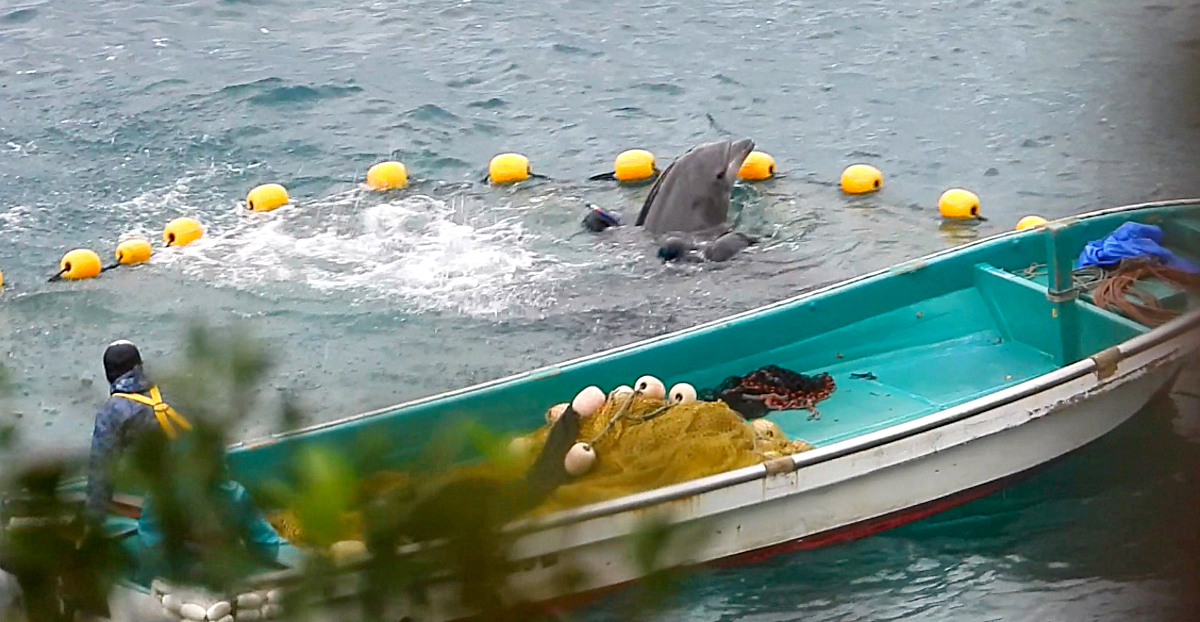
Taiji dolphin hunt. (Photo: Dolphinproject.com)
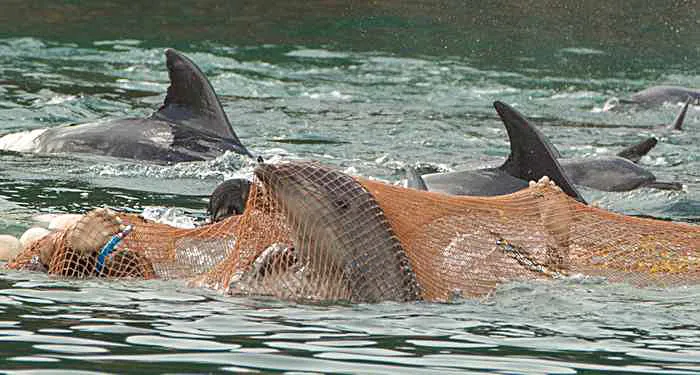
Japanese dolphin hunting. (Photo: Supplied)
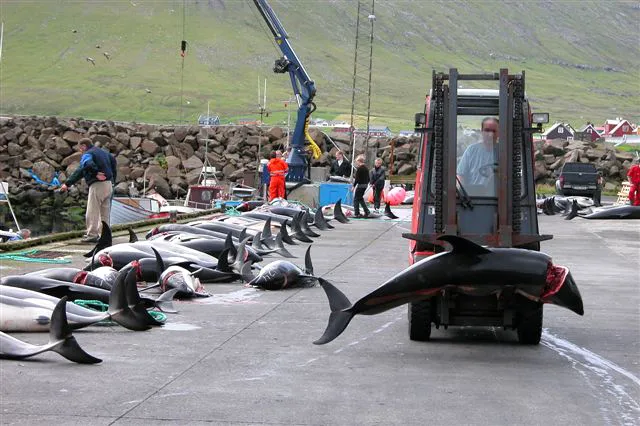
Japanese dolphin hunt. (Photo: Dolphinsintaijin.com)
“Given the dangerous levels of toxins known to accumulate in some cetaceans, and growing concerns over zoonoses in wildlife,” says the report, “cetacean meat would be an irresponsible food choice that could represent a threat to human health and wellbeing.”
Cetaceans were found to be specifically targeted in 20 countries, and at least 30 species of small cetaceans are known to be used as bait, either through hunts or by using animals caught in fishing nets.
“This practice has increasingly evolved into a directed take,” said Nicola Hodgins, an expert on small cetaceans at WDC.
“In some areas, the market value of dolphins as bait outweighs its value as food.”
The report says that about 15,000 dolphins are killed annually in Peru and close to 10,000 in Ghana. Many are also caught as bycatch in trawls.
Of great concern is that distant water fleets that prowl the world’s oceans are increasingly using dolphins as bait.
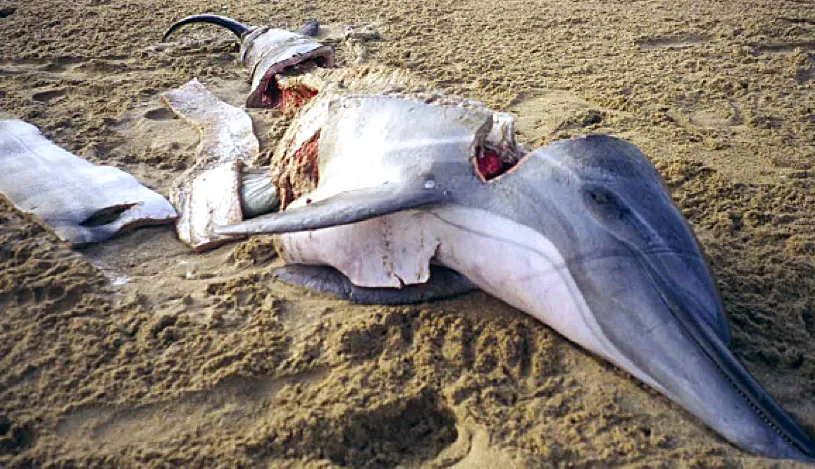
Due to its durability in salt water, dolphin meat is a preferred fishing bait. (Photo: Supplied)
“This gives dolphin hunts a new dimension,” said Dr Sandra Altherr, biologist and head of science at Pro Wildlife.
“The huge Taiwanese and South Korean distant water fleets are just the tip of a huge iceberg.”
Fishers around the globe are also killing dolphins because they see them as competitors for dwindling fish stocks. This claim is false, says the report. With the oceans being overfished, there’s a fear that dolphin culling is likely to increase.
What’s being hunted
At least 20 countries are targeting cetaceans. Here are just three examples.
On the high seas, Taiwan was found to be commercialising bycatch and specifically hunting a wide range of cetaceans by harpoon, spear or electrocution. These include short-finned pilot whale, common dolphin, Risso’s dolphin, Fraser’s dolphin, orca, false killer whale, pantropical spotted dolphin, spinner dolphin, striped dolphin, rough-toothed dolphin, common bottlenose dolphin, Indo-Pacific bottlenose dolphin, Indo-Pacific humpback dolphin, striped dolphin, Cuvier’s beaked whale, melon-headed whale, ginkgo-toothed beaked whale, Blainville’s beaked whale, and pygmy killer whale.
Ghana is targeting the pantropical spotted dolphin, Clymene dolphin, Fraser’s dolphin, rough-toothed dolphin, Risso’s dolphin, common bottlenose dolphin, Atlantic spotted dolphin, false killer whale, long-beaked common dolphin, melon-headed whale, short-finned pilot whale, dwarf sperm whale, spinner dolphin, pygmy killer whale, and Cuvier’s beaked whale.
Japan’s list is even longer: Dall’s porpoise, short-finned pilot whale, Risso’s dolphin, Pacific white-sided dolphin, false killer whale, pantropical spotted dolphin, striped dolphin, common bottlenose dolphin, Baird’s beaked whale, rough-toothed dolphin, melon-headed whale, Hubbs’ beaked whale, ginkgo-toothed beaked whale, Indo-Pacific bottlenose dolphin, pygmy sperm whale, dwarf sperm whale, northern right whale dolphin and orca.
“With fish stocks depleted worldwide and fishing activities continuing to intensify,” said Hodgins, “there is a clear risk that hunting of small cetaceans will further increase in the future unless it is urgently regulated around the world.”
Coastal nations have to improve and better enforce national legislation, she said, and increase engagement at international conventions. The alternative is that small cetaceans will share the same fate as large whales, whose populations collapsed before the IWC’s moratorium on commercial whaling in the 1980s brought about a turnaround.
Of special concern are Amazon river dolphins.
Every year, thousands of these endangered animals (locally known as boto) are slaughtered to be used as bait for piracatinga fisheries. Their oil has recently been used to treat coronavirus infections.
“We risk losing the boto altogether in the coming decades,” says the report.
A high number of cetaceans are being hunted by African countries, mostly in West Africa, but also in Kenya, Mozambique and Madagascar
The use of dolphins as food was reported from Sao Tomé and Príncipe, and in Madagascar, humpback and bottlenose dolphins are killed for consumption or sale.
In Mozambique, says the report, the demand for aquatic wild meat is leading to directed and opportunistic hunts, as well as harvesting of stranded individuals, alive or dead.
Read more in Daily Maverick: Orca hunt was like a ‘military exercise’ — scientist describes unexpected encounter on Cape West Coast
It is not only the sheer number of individuals taken that has a negative impact, says the report, but also the potential disruption of their social structures and loss of cultural knowledge (such as migration routes and hunting techniques for different prey). This is likely to lead to lower survival and reproductive success and the impeded recovery of remnant populations.
The report notes that national legislations are poor or inadequate.
Even in countries where the hunting of small cetaceans is forbidden or regulated by quotas, hunting continues almost unhindered because of weak enforcement or the lack of political will.
The NGOs call on coastal states to improve their legislation and enforcement regarding the hunting of small cetaceans and urge international bodies such as CITES to intensify their efforts in protecting the charismatic animals.
Any additional loss in the short-term owing to their exploitation as a human food source or bait, warns the report, will decrease the resilience of populations and increase the likelihood of functional and actual extinction by the end of the century.DM





















 Become an Insider
Become an Insider
What an awful situation. Is there no limit to or species greed and wilful contempt for other animals? Thank you Don for bringing this to our attention.